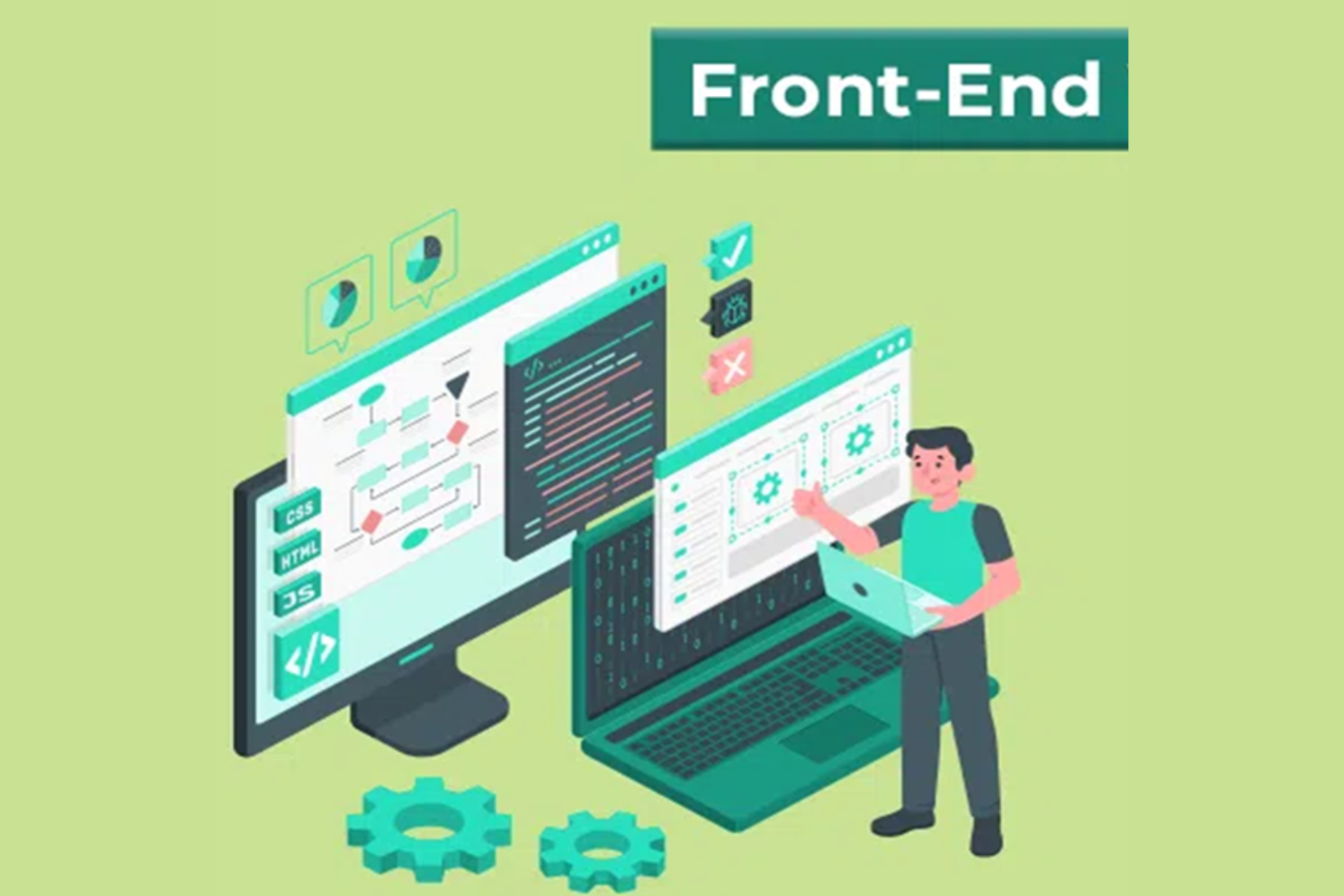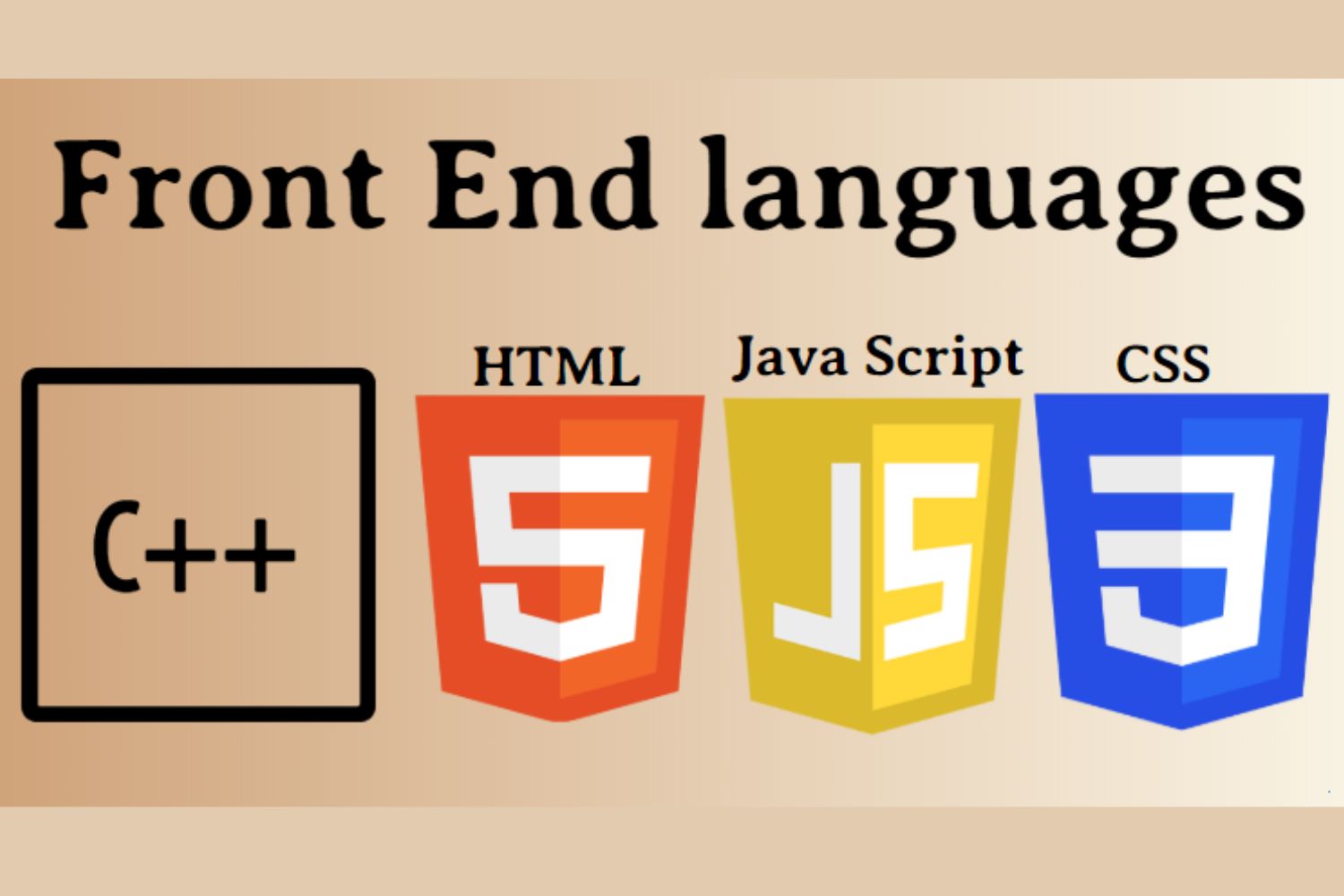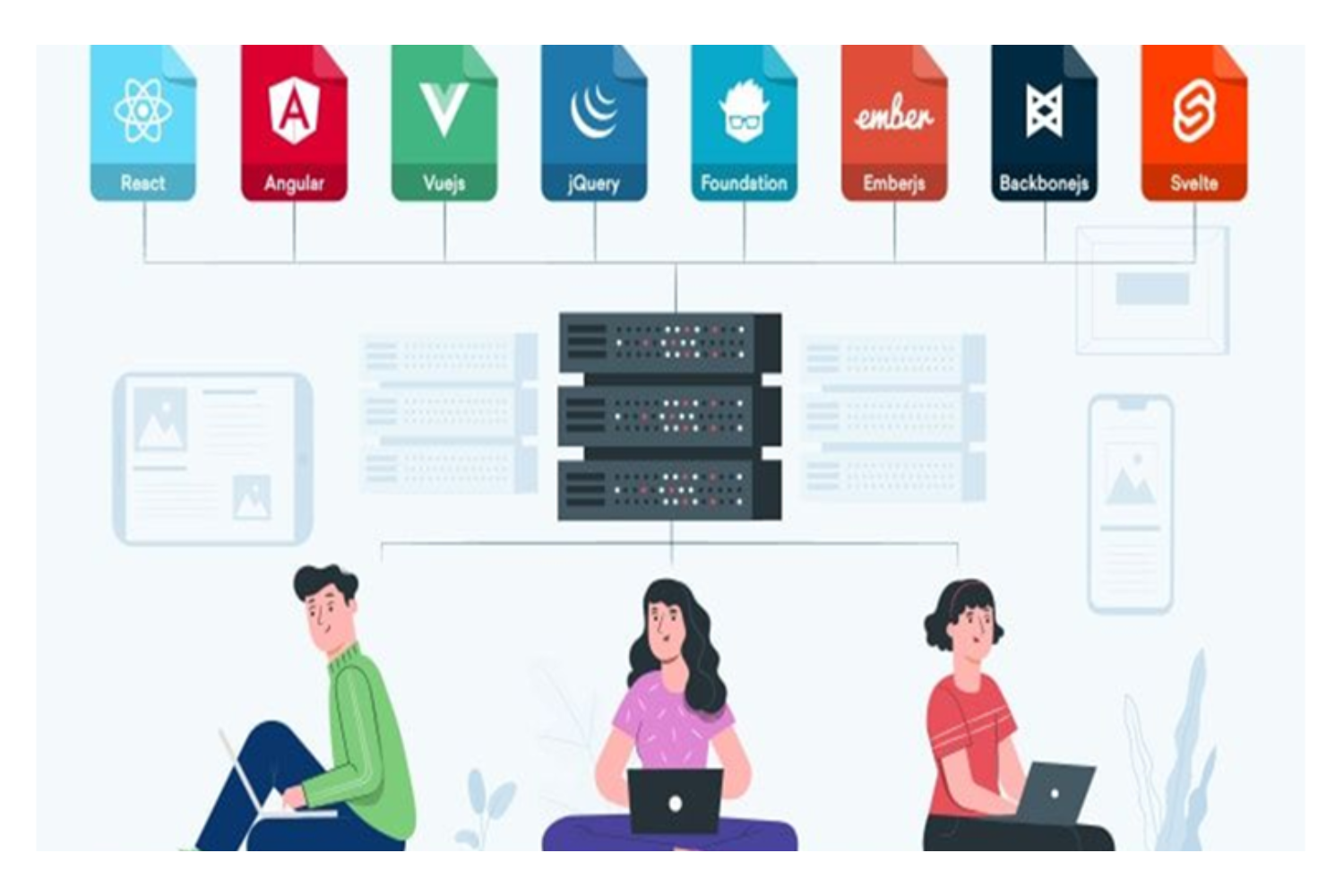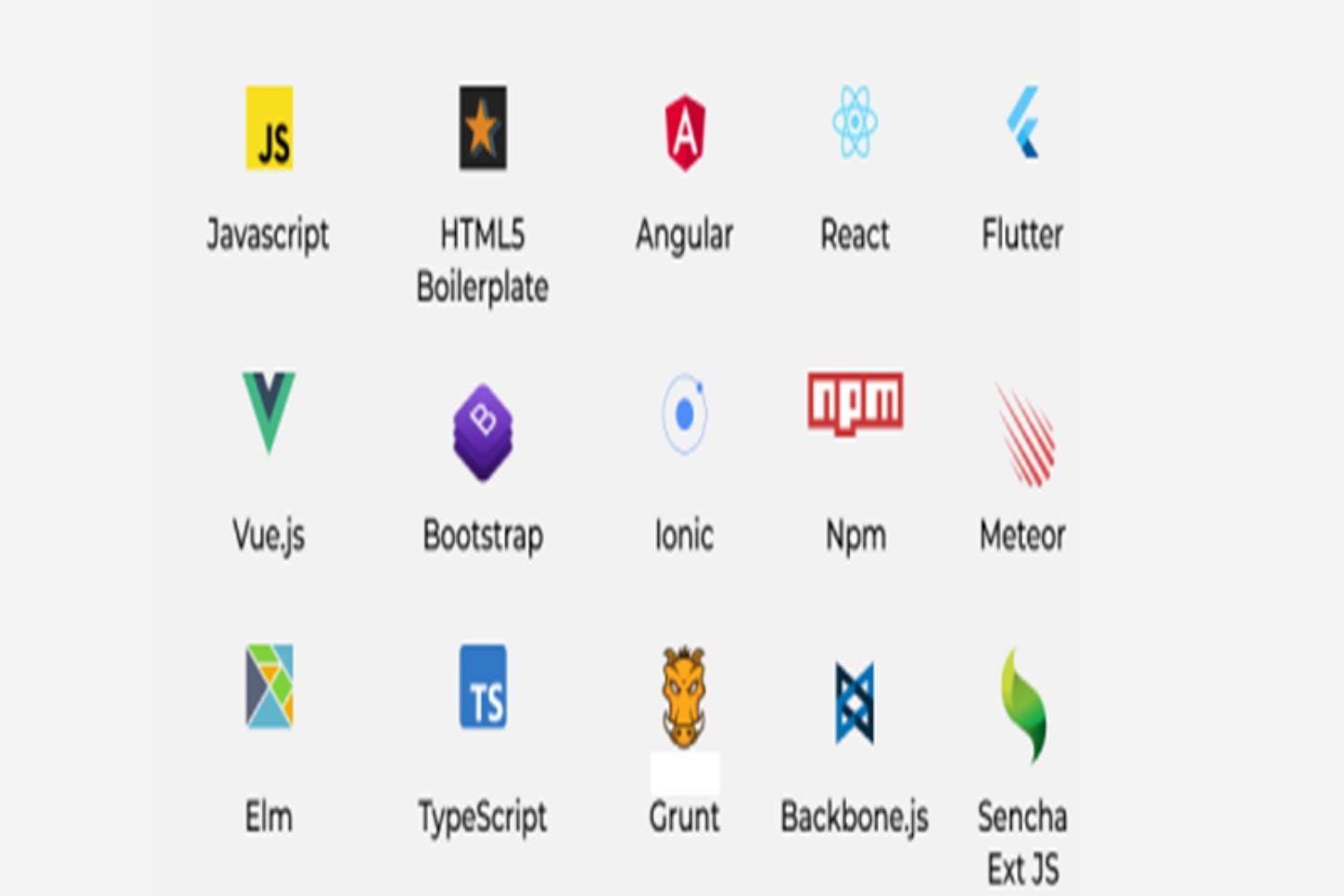
Java Frontend
Java Frontend Development:
The Java front end is the part of the website that users can see and interact with such as the graphical user interface (GUI) and the command line.
In other words, the visual aspects of the website that can be seen and experienced by users are frontend.
It’s also known as the “application’s client side.” It consists of all the elements that users interact with directly, such as buttons, colors, styles and colors of text, graphics, tables and graphs, and a navigation menu. Front End development uses three languages: HTML, CSS, and JavaScript.

Performance and responsiveness are the two primary goals of the Java front end. The website’s developer is responsible for making sure the site is responsive, meaning that it displays correctly on all types of devices and doesn’t behave strangely on larger screens.
Java Front End Languages:
The front-end portion is built by using some languages which are discussed below:
HTML: HTML stands for Hypertext Markup Language. It is used to design the front-end portion of web pages using a markup language. HTML is a combination of Hypertext and Markup language. Hypertext defines the link between web pages.

CSS: Cascading Style Sheets fondly referred to as CSS is a simply designed language intended to simplify the process of making web pages presentable. CSS allows you to apply styles to web pages. Also, if you want to enhance your skills then enroll in Geeksforgeeks CSS Foundation – Self-Paced course and learn all new concepts of CSS.
JavaScript: JavaScript is a famous scripting language used to create magic on sites to make the site interactive for the user. It is used to enhance the functionality of a website to run cool games and web-based software. Applicable in both front-end and back-end, JavaScript is key to becoming a good developer..
There are many other languages through which one can do front-end development depending upon the framework for example Flutter uses Dart, React uses JavaScript and Django uses Python, and much more.

Front-End Frameworks and Libraries:
AngularJS: AngularJs is a JavaScript open-source front-end framework that is mainly used to develop single-page web applications(SPAs). It is a continuously growing and expanding framework which provides better ways for developing web applications. It changes the static HTML to dynamic HTML. It is an open-source project which can be free. It extends HTML attributes with Directives, and data is bound with HTML.
React.js: React is a declarative, efficient, and flexible JavaScript library for building user interfaces. React.JS is an open-source, component-based front-end library responsible only for the view layer of the application. It is maintained by Facebook. Moreover, React Js makes Front-end development very easy. You can now develop industry-ready Web Applications by enrolling in Geeksforgeeks React JS (Basic to Advanced) – A self-Paced course.
Bootstrap: Bootstrap is a free and open-source tool collection for creating responsive websites and web applications. It is the most popular HTML, CSS, and JavaScript framework for developing responsive, mobile-first websites.
jQuery: jQuery is an open-source JavaScript library that simplifies the interactions between an HTML/CSS document, or more precisely the Document Object Model (DOM), and JavaScript. Elaborating on the terms, jQuery simplifies HTML document traversing and manipulation, browser event handling, DOM animations, Ajax interactions, and cross-browser JavaScript development.
SASS: SASS stands for Syntactically Awesome Style Sheets. It is the most reliable, mature, and robust CSS extension language. It is used to extend the functionality of an existing CSS of a site including everything from variables, inheritance, and nesting with ease.
Flutter: Flutter is an open-source UI development SDK managed by google. It is powered by the Dart programming language. It builds performant and good-looking natively compiled applications for mobile (IOS, Android), web, and desktop from a single code base.
Some other libraries and frameworks are Semantic-UI, Foundation, Materialize, Backbone.js, Ember.js, etc.
Benefits:
The Java front end is a quick development platform. CSS, HTML, and JavaScript are used by most front-end developers. The general organization and content of the document are laid out by the developers using HTML. Furthermore, they employ CSS for styling with sophisticated interactivity and JavaScript for scenarios. When creating custom software, some developers utilize AJAX to update the entire page and website.

1.Graphic Designing Tool:
The tools for graphic design are perfect for making a website prototype. Java front-end developers can experiment and test the user interface with these tools before figuring out the actual code.
2. Secure:
The fully secured coding of the Java front end makes it one of the best app builders for businesses. Thus, you won’t have to worry about your website working if you have front end development skills.
3. Real-Time Programming:
Developers are able to watch the browser change without losing application status. The development life cycle thus provides real-time programming.
4. Easy to Learn:
Java front-end development techniques and tools are simple to learn, comprehend, and apply. For instance, the languages used in front-end technology are HTML, CSS, and JavaScript. These languages are used in the formulation of more than 90% of the code and design. Thus, you will be able to have a successful career in this field by learning them.
Job Roles:
1. Front-end Java Developer
2. Frontend Engineer
3. JavaScript Developer
4. Interface Engineer
5. Web User Interface Developer
6. Software Engineer
7. Full Stack Engineer
8. Application Developer.
9. User Experience Engineer
10. Web Application Developer
11. Web Development Specialist
12. Web Designer
13. WordPress Developer.
Expected Package In Java Front end :
Salary is an essential part of any job but with a good salary, one has to have good experience too. Top level companies are in search of good Front end Java Developer. So it ranges between 13LPA- 35LPA.
Technologies Used:
1. HTML5 (Hypertext Mark-up Language)
2. CSS (Cascading Style Sheets)
3. JavaScript
4. Next JS
5. React Native
6. GatsbyJS

7. Monorepo
8. Micro Frontends
9. Three JS
10. Remix
11. Headless CMS
12. GraphQL
13. NPM (Node Package Manager)
Course Highlights/ Details:
The Java Frontend course by Scodeen Global brings you numerous benefits and perks.
1. Suited for students, fresher’s, professionals, and corporate employees
2. Live online classes
3. 4-month program
4. Certificate of completion
5. Decision Oriented Program of Analysis
6. Live Classes by highly experienced faculties
7. Hands-on experience with real-life case studies.

Conclusion:
One of the most popular programming languages among developers is still Java. It can be used in front-end programming. Its exceptional performance and well-regarded user experience make it stand out. Even though this programming language is outdated, it has a lot of applications today in front end.

